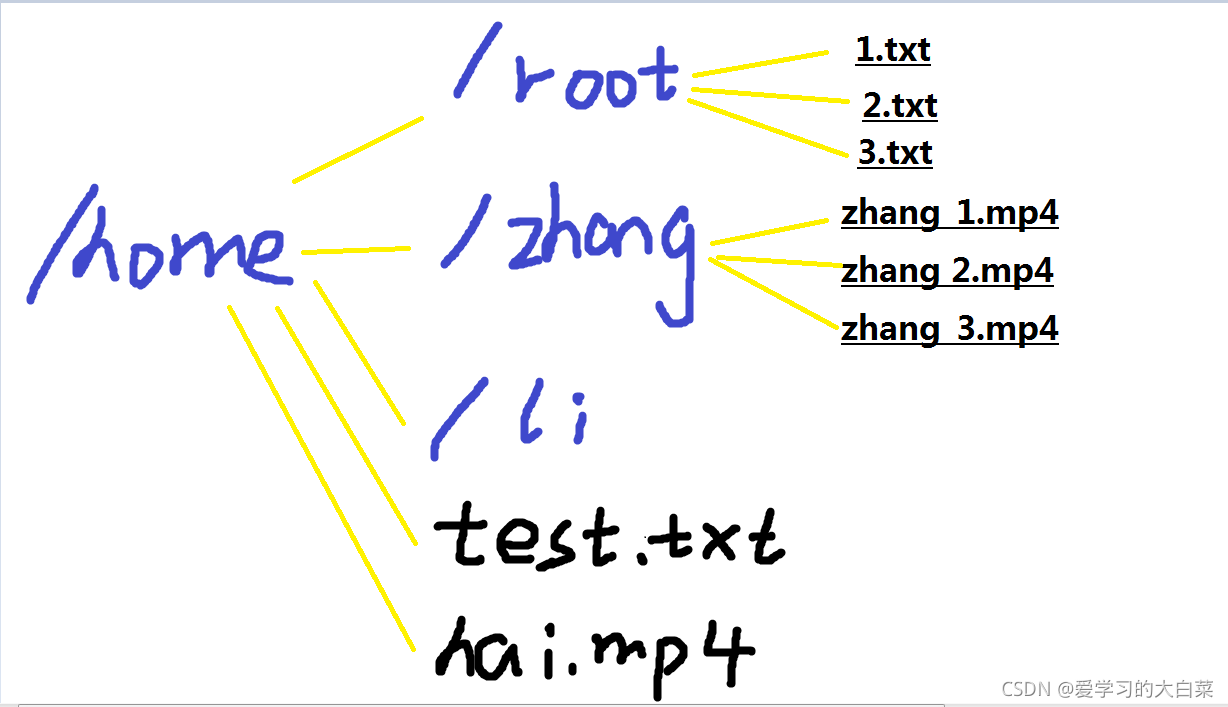1、
https://www.jb51.net/article/226935.htm
https://www.runoob.com/python/os-walk.html
https://www.cnblogs.com/he-ding/p/10045246.html
os.walk()是一种遍历目录数的函数,它以一种深度优先的策略(depth-first)访问指定的目录。
其返回的是(root,dirs, files),
- root代表当前遍历的目录路径,string类型
- dirs代表root路径下的所有子目录名称,list类型,列表中的每个元素是string类型,代表子目录名称。
- files代表root路径下的所有子文件名称,返回list类型,列表中的每个元素是string类型,代表子文件名称。
加入我当前的目录如下。

可以先打印一下其是怎么遍历的:
|
1
2
3
4
5
6
7
8
9
|
import osfrom os.path import joinhome_path = "/home"for (root, dirs, files) in os.walk(home_path): print(root) print(dirs) print(files) print("=" * 50) |
输出如下:
/home
['root', 'zhang', 'li']
['test.txt', 'hai.mp4']
==================================================
/home/root
[]
['1.txt', '2.txt', '3.txt']
==================================================
/hoome/zhang
[]
['zhang_1.mp4', 'zhang_2.mp4', 'zhang_3.mp4']
==================================================
/home/li
[]
[]
==================================================
一共三行,
第1行代表当前遍历的目录,我们称为root目录,
第2行代表root目录下的子目录列表,我们称为dirs,
第3行代表root目录下的子文件列表,我们称为files,
上面的列表为空就代表当前遍历的root目录下没有子目录或者没有子文件
另外,如果我想遍历home目录下所有的目录和文件的绝对路径,则直接用os.path.join()方法对 子目录或子文件名 和 root目录 进行拼接即可,则代码如下:
|
1
2
3
4
5
6
7
8
9
|
import osfrom os.path import joinhome_path = "/home"for (root, dirs, files) in os.walk(home_path): for dir in dirs: print(join(root, dir)) for file in files: print(join(root, file)) |
输出:
/home
/home/root
/home/zhang
/home/li
/home/test.txt
/home/hai.mp4
/home/root/1.txt
/home/root/2.txt
/home/root/3.txt
/home/zhang/zhang_1.mp4
/home/zhang/zhang_2.mp4
/home/zhang/zhang_3.mp4


 浙公网安备 33010602011771号
浙公网安备 33010602011771号